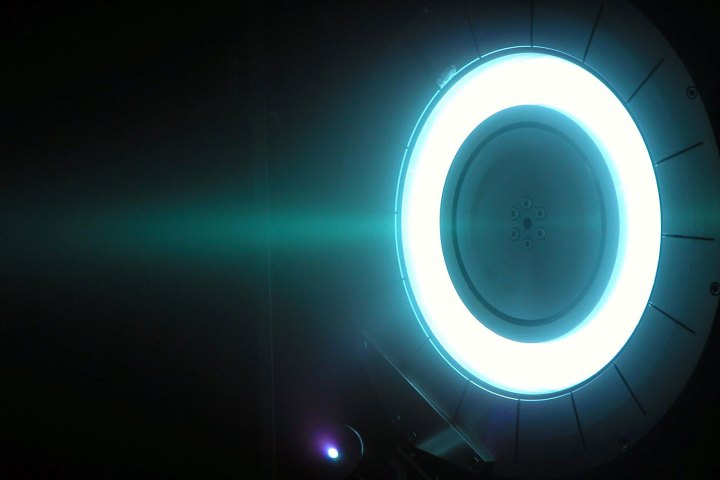
For the uninitiated, ion engines are basically low-thrust propulsion systems with a long runtime, which makes them perfect for spacecraft flight. The engines generate thrust by ionizing a propellant gas and then accelerating that gas through the engine using an electrostatic or electromagnetic field. There are a variety of ion engines that use different ionizing materials and different propulsion systems.
The Neumann drive is very different from NASA’s HiPEP counterpart, relying on basic principles to power the drive. In Neumann’s system, he uses a solid propellant and an electrical arc to vaporize the propellant into a cloud of ions, electrons and neutral vapor. This mixture is accelerated through an anode ring and then focused using a magnetic field. This combination pushes the gas mixture out in a contiguous pattern of short and light bursts.
Neumann’s engine has several advantages that set it apart from competing ion drives. First, the Neumann prototype uses basic principles of physics for its propulsion system and is simple in design, which makes it easy to operate and repair. Also, it can be powered by several different commonly-found metallic substrates, with the best thus far being magnesium. This multi-fuel capability contrasts with NASA’s drive, which requires the gas Xenon to run.
The current reigning ion engine is NASA’s HiPEP engine, which is a complex, finely-tuned Hall thruster that produces up to 30 to 40 µN/W of thrust. The Neumann engine lags behind the Hall thruster in terms of thrust (20 µN/W), but its solid propellant gives it a big boost when it comes to specific impulse, which gauges an engine’s efficiency by calculating its thrust over time. While the Hall thruster provides 9,600 (+/- 200) seconds of specific impulse, the Neumann drive is calculated at 14,690 (+/- 2000) seconds. This means Neumann’s drive uses fuel more efficiently and thus can fly longer than its NASA counterpart, possibly even making it to “Mars and back on single tank of fuel,” suggested Neumann.
Neumann will continue to improve the performance of the drive as part of his new company Neumann Space, which has been granted a provisional patent for technology. Neumann will be presenting his research during the 15th Australian Space Research Conference, which will be held on September 30 at the Australian Defense Force Academy.



